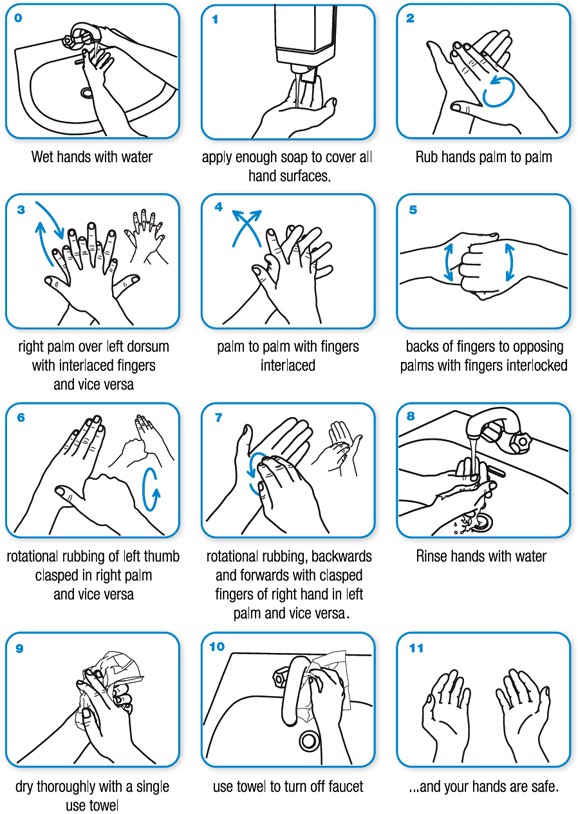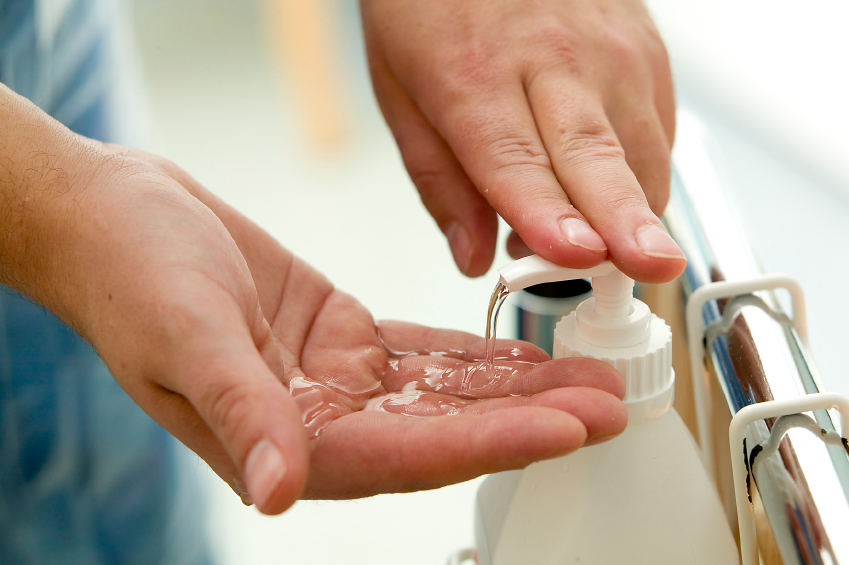Call it the “Great Hand Hygiene Shoot-Out.”
Two of the world’s biggest health organizations, the U.S. Centers for Disease Control (CDC) and the World Health Organization (WHO) have long recommended different methods for using hand sanitizer.
With hand cleanliness becoming more important in hospitals to stop the spread of superbug infections, sanitizer is often used between hand washings. That’s because it requires no running water or drying. Doctors and nurses can use it quickly.
Scottish researchers set out to find which sanitizing method—the CDC’s or the WHO’s—is superior for getting rid of germs.1 Their results were published recently in the journal Infection Control & Hospital Epidemiology.
The CDC method is three steps:
- Step One: Apply sanitizer to one palm.
- Step Two: Rub palms together.
- Step Three: Rub product over hands until dry.
The WHO method is six steps:
- Step One: Apply sanitizer to one palm.
- Step Two: Rub palms together.
- Step Three: Rub each palm front to back over the back of the other hand, interlacing fingers.
- Step Four: Twist palms with fingers interlaced, and rub between fingers.
- Step Five: Interlock your fingers, (thumbs should be on opposite sides), and twist again, this time, backs of fingers against palms.
- Step Six: Clasp your left thumb in your right hand and move thumb in circular motion—then switch thumbs.
And the winner is…
The WHO.
The WHO technique reduced more than twice as many germs as the CDC method.2 We weren’t exactly surprised… It’s far more thorough.
One drawback: The WHO method takes a bit longer. It requires about 42.5 seconds on average to complete. The CDC method takes only 35 seconds. But if it saves you from a nasty infection, the extra 7.5 seconds is well worth the time.3
Professor Jacqui Reilly of the Glasgow Caledonian University led the study. She noted hand hygiene is “the single most important intervention that you can do to prevent health care-associated infection, but also to protect yourself and your family from infections and viruses.”
We recommend using alcohol-based sanitizers. Stay away from those with the antibacterial chemical triclosan. They have been linked to everything from cancer to early puberty and liver damage.
What about washing your hands with soap? It’s less convenient and more time-consuming. But it is still superior to sanitizer in getting rid of germs.4 The WHO recommends the same method as for sanitizer, but with additional steps to dry your hands.
Here’s a diagram of the WHO’s winning hand-cleaning technique. When using sanitizer, follow steps two through six. Follow all the steps when using soap and water.
The Best Way to Get Rid of Hand Germs

Image credit: The World Health Organization
And if you want to stay away from contagious diseases, you should know about this…
There are 31 secrets that build a super-human immune system. And we’ve put them all together for you in our report, Bulletproof Your Immunity: Easy Ways to Protect Your Health.
Get all the details HERE.
In Good Health,

Angela Salerno
Executive Director, INH Health Watch
Like this Article? Forward this article here or Share on Facebook.
References:
1http://nymag.com/thecut/2016/04/how-to-wash-your-hands.html
2http://journals.cambridge.org/action/displayAbstract?fromPage=online&aid=10267985&fileId=S0899823X16000519
3http://www.nytimes.com/2016/04/21/health/washing-hands.html?_r=2
4http://www.cdc.gov/handwashing/show-me-the-science-hand-sanitizer.html

